Recent Articles
Popular Makes
Body Types
10 Cheapest Ferraris Over the Years
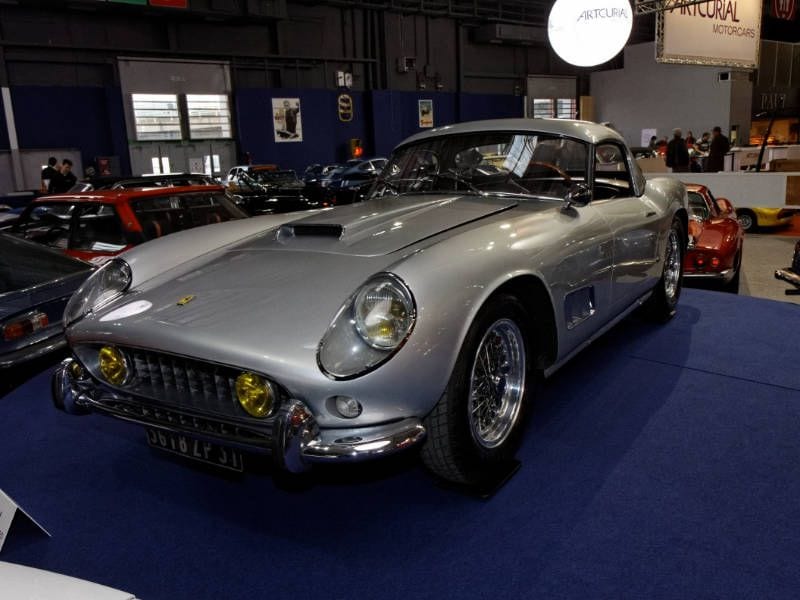
Ferrari 250 GT California ・ Photo by Wikimedia Commons
Although you can find used examples for the price of a modern-day economy car, the cheapest Ferraris over the years have always been pretty expensive when new. On the other hand, they were certainly less expensive than the brand’s entry model for the current year. That car, the 2018 Ferrari Portofino, is priced from $205,000. But there’s a flip side to that, too, since the latest Ferraris are faster, more luxurious and more technologically advanced than ever. The new Portofino, for instance, carries a 590-horsepower V8 engine that helps the car gallop from 0-124 mph in 10.8 seconds. This is according to Ferrari, which measured acceleration to 200 kph for metrically minded European customers. As for how the older cars measure up, read on!
Source: Original Ferrari pricing is from the book, “Ferrari,” published in 2011 by Larry Edsall for Motorbooks.
1951 Ferrari 340 America
After World War II, U.S. demand for the new generation of European sports cars went into overdrive. Automakers were quick to respond, and the results included a wide range of now-classic roadsters — like the 1950 Ferrari 340 America. It has traditional sports-car proportions, with a particularly long hood, but that’s more than just a design choice.
The room up front was needed for Ferrari’s V12 engine. Capable of 220 horsepower, that massive motor delivered a top speed of almost 150 mph. The small British sports cars that followed the Ferrari had one-third the cylinders and about one-third the power. Also, though the cheapest Ferraris over the years begin with the 340 America, the car itself started at around $8,000. That’s the equivalent of $84,000 today.
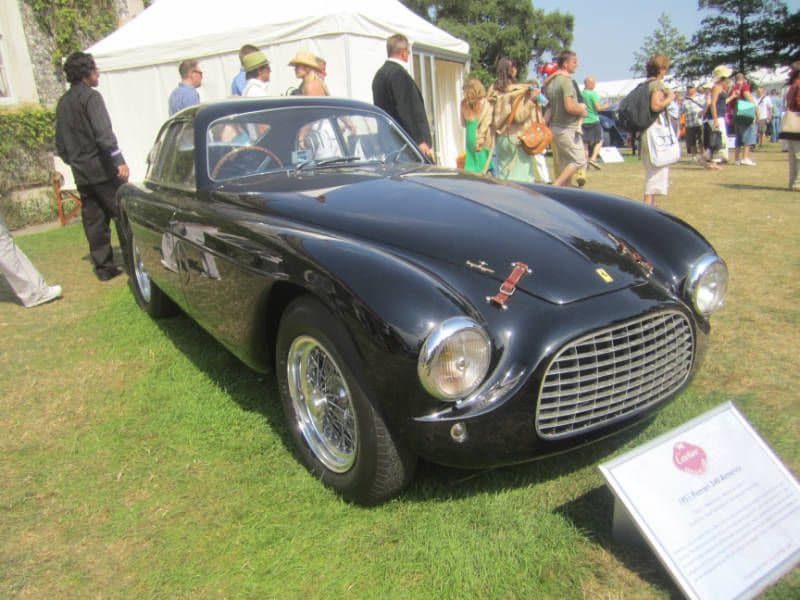
Photo by Wikimedia Commons
1971 Ferrari Dino 246 GT
By the late 1960s, Ferrari was working with Fiat to increase production with a line of cars specifically aimed at first-time sports-car buyers. These were sold under the “Dino” name, honoring Enzo Ferrari’s late son, and they were responsible for a number of the cheapest Ferraris over the years.
The 1971 Dino 246 GT, for example, had an original cost of just more than $90,000 (when adjusted for inflation). And while it had a V6 engine, instead of the V12 found in the 340 America, engineering had advanced to the point where the Dino had nearly as much power. The 246 GT is listed at 195 horsepower, with Ferrari claiming a top speed of more than 145 mph.
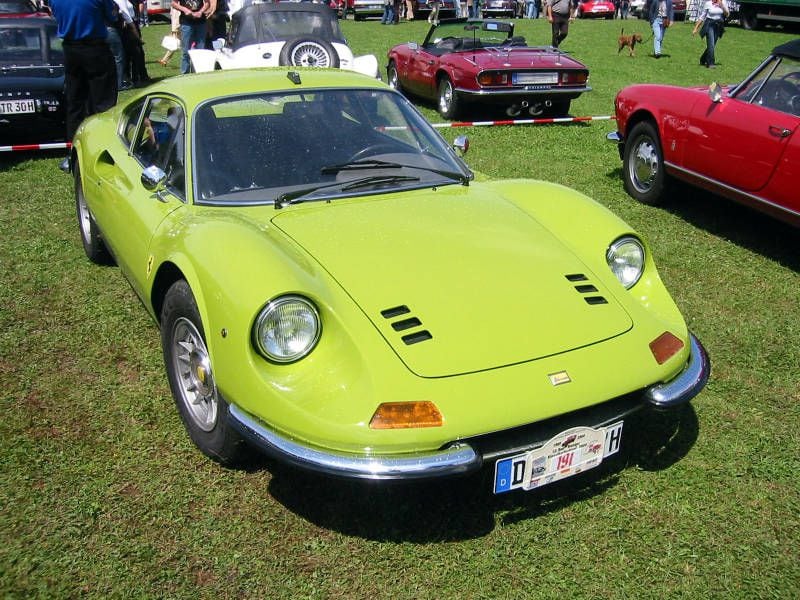
Photo by Wikimedia Commons
1951 Ferrari 212 Inter
Some of the cheapest Ferraris over the years have been from the automaker’s earliest days, when it was just beginning to expand from building race cars to creating road-ready versions. Consider the 1951 212 Inter. All the 212 series cars relied on much the same chassis—and a similar V12 engine — but there were both race-specific Export models and the production-based Inter editions.
The latter chassis could be topped with a variety of different body styles, too. In fact, those Inter bodies featured one of the Ferrari designs by the iconic design house of Pininfarina. Those different bodies had different pricing, naturally, but the starting point could be as low as $93,000 (in today’s money).
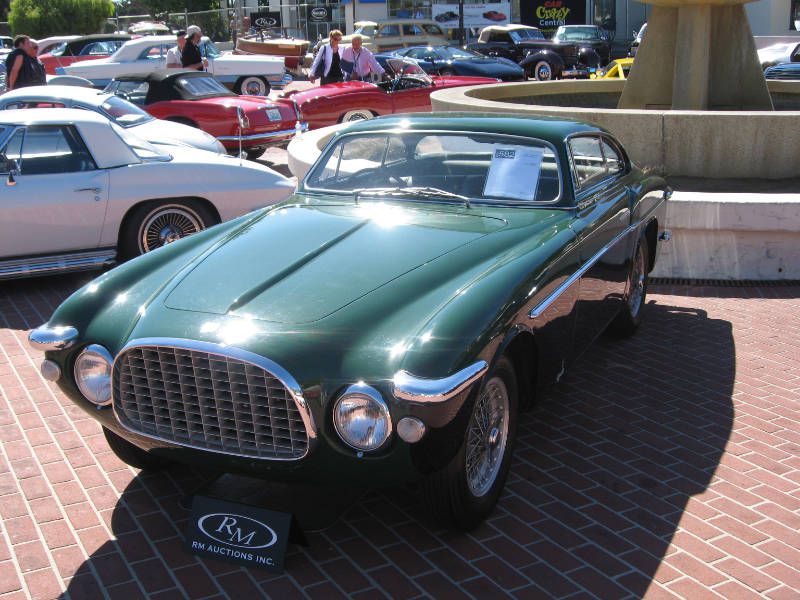
Photo by Wikimedia Commons
1967 Ferrari Dino 206 GT
We already mentioned the Dino 246 GT earlier, but the first car with the “Dino” name came four years before. The 1967 Ferrari Dino 206 GT set a new template for entry-level cars from the Prancing Horse brand. Not only was it the first Ferrari built on an assembly line, but it was also noticeably smaller than past Ferraris. Indeed, the Dino 206 is only a few inches longer than a 2018 Honda Fit subcompact hatchback — and roughly 20 inches shorter than the new Portofino.
Those nimble dimensions were then reflected in a relatively low MSRP. After taking into account inflation, early Dinos went for approximately $100,000. Other highlights here include the first mid-engine design for a Ferrari.
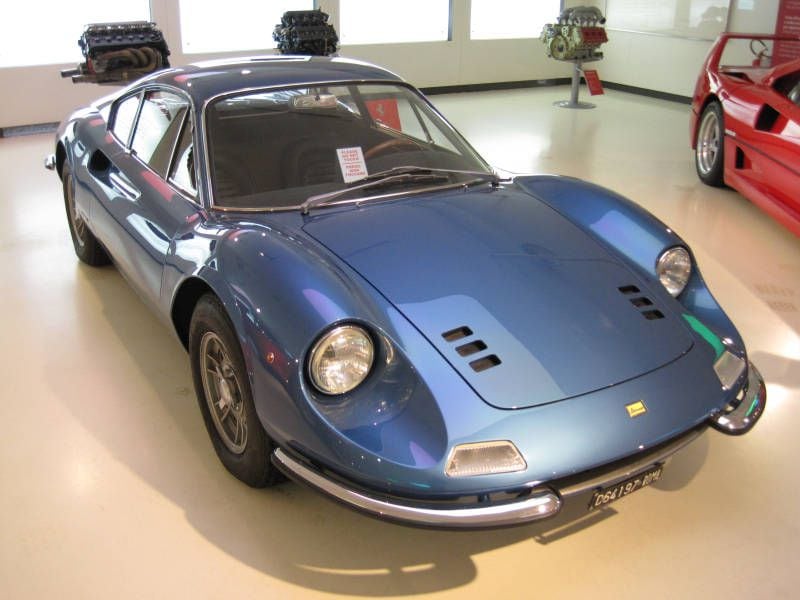
Photo by Wikimedia Commons
1956 Ferrari 250 GT
Like most of the cheapest Ferraris over the years, the 1956 250 GT was heavily influenced by the automaker’s impressive motorsports success. That even shows up in the car’s nickname: Enthusiasts often add “TDF” to the 250 GT in honor of its victory in the grueling 1956 automotive Tour de France.
Yet despite taking that checkered flag and many more during its racing career, the 250 GT checked in with a fairly low original MSRP. The car was available for “only” a tad more than $101,000. At the same time, the car also featured one of Ferrari’s fantastic V12 engines — a 3.0-liter unit that delivered 240 horsepower — and it wore the first of the brand’s legendary “Berlinetta” body styles.
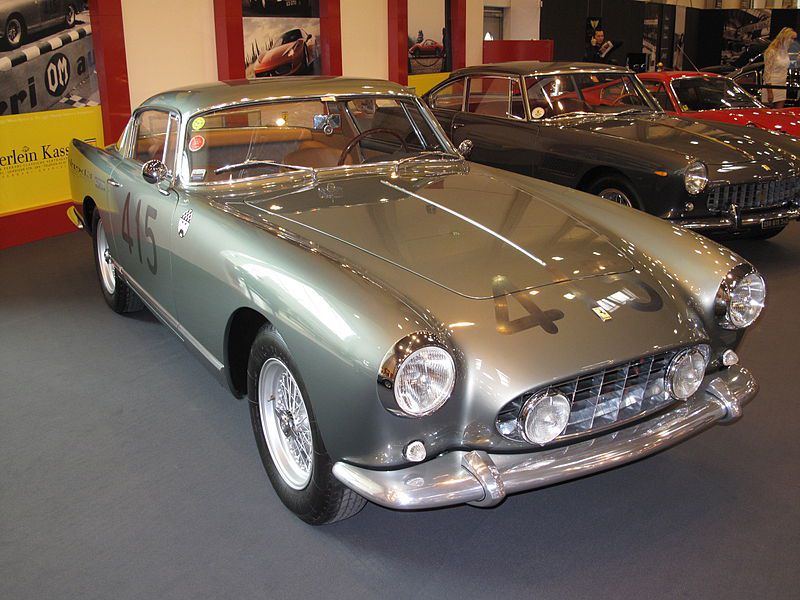
Photo by Wikimedia Commons
1966 Ferrari 330 GTS
As you may have noticed, the cheapest Ferraris over the years weren’t really all that cheap when they were originally introduced—almost all of them cost the equivalent of at least $100,000. But that’s still a bargain compared to their current prices.
Take the 1966 Ferrari 330 GTS. You could bring one of these roadsters home for about $106,000 when it was new. By 2014, however, a non-running model, which had been left in a barn for 45 years after an engine fire, went for more than $2,000,000 when it was discovered and put up for auction. The 330 GTS also continues Ferrari’s winning formula for premium performance, wearing another attractive Pininfarina design and featuring a 3.0-liter V12.
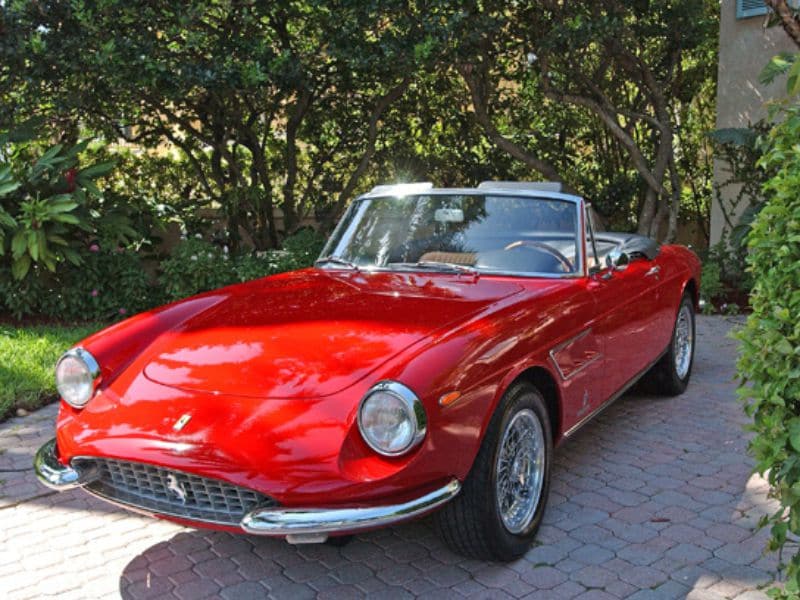
Photo by Wikimedia Commons
1964 Ferrari 275 GTB
Next in our gallery of the cheapest Ferraris is the 1964 275 GTB. The first retail Ferrari with an independent rear suspension, the 275 GTB also stands out for its sheet metal — in two different ways. First off, the actual design is aggressive and dramatic, showcasing a curvy shape and details like prominent vents behind the front wheels.
Then there’s the metal in that sheetmetal. Setting a template still used for today’s high-performance vehicles, the 275 GTB relies on aluminum for its doors, hood and trunk lid; the dedicated racing models were built with all-aluminum bodies. In any case, all that lightweight metal could make a heavy impact on your bank: The street-legal model had starting prices of approximately $111,000 (in 2017 dollars).
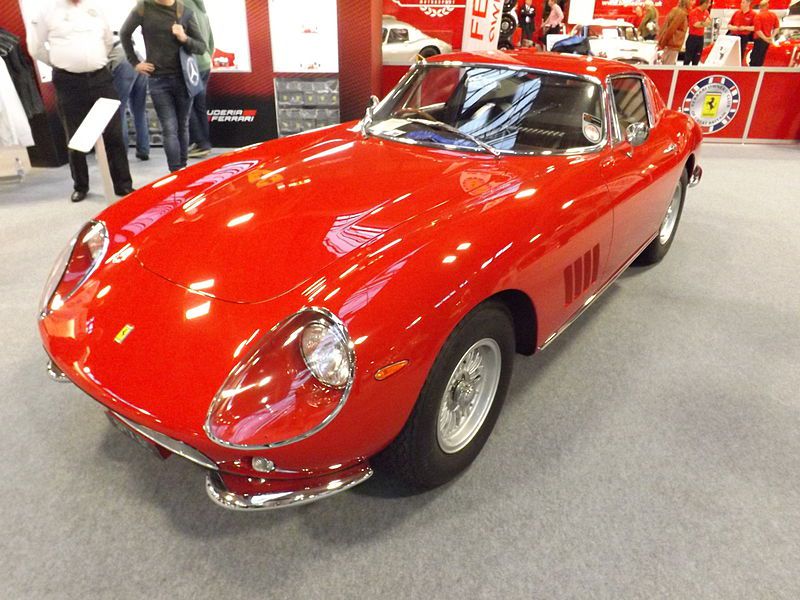
Photo by Wikimedia Commons
1975 Ferrari 308 GTB
The 1975 Ferrari 308 GTB's MSRP was the equivalent of more than $138,000 when it initially hit the U.S. marketplace. But you really, really don’t want to literally hit anything if you have one. After all, the 308 GTB is the first — and so far only — Ferrari built with a fiberglass body. The only metal panel was the car’s aluminum front-trunk lid.
Front trunk? Yes, the 308 GTB had the more exotic mid-engine Ferrari layout, with a 2.9-liter V8 engine mounted in a transverse orientation. On the topic of exotic locations, later versions of the car, in its 308 GTS iteration, would have a starring role on the Hawaii-based "Magnum, P.I."
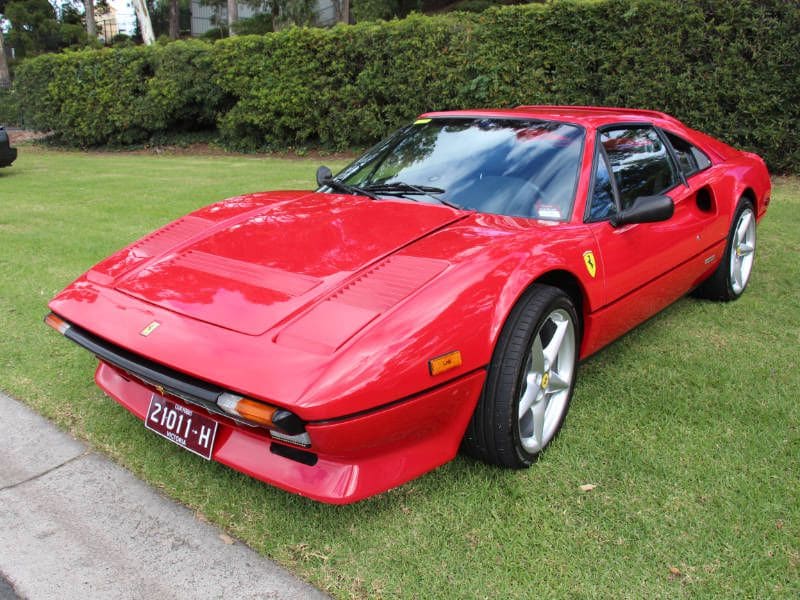
Photo by Wikimedia Commons
1962 Ferrari 250 GTO
We’ve already discussed how some of history's lowest-priced Ferraris went on score seven-figure auction bids in more recent sales. Well, it turns out that one of them also holds the record for most expensive car ever auctioned.
It’s the 1962 250 GTO, which could be purchased for under $150,000 when it debuted. That may seem like a lot of money for a “cheap” car, but the 250 GT became one of the automaker’s most successful racers, winning multiple class victories at the 24 Hours of Le Mans. Moreover, one of those full-on race cars went for $38 million went it crossed the auction block in 2014. Highlights for both versions include a V12 engine and race-ready touches like removable front radiator panels.

Photo by Wikimedia Commons
1956 Ferrari 410 Superamerica
We’ll finish our gallery the same way we started it: with a model tailored for U.S. drivers — or at least the ones who could afford to pay the equivalent of $155,000 for a new car.
The 410 Superamerica served up a super-sized 5.0-liter V12 engine and a Pininfarina design, but with all-American touches that included a prominent front hood scoop and rear tailfins. Additionally, unlike the usual Ferrari approach of deriving a road-going car from a dedicated racer, the 410 America took the opposite tack: It was designed first as a production car, only spawning competition models afterward.
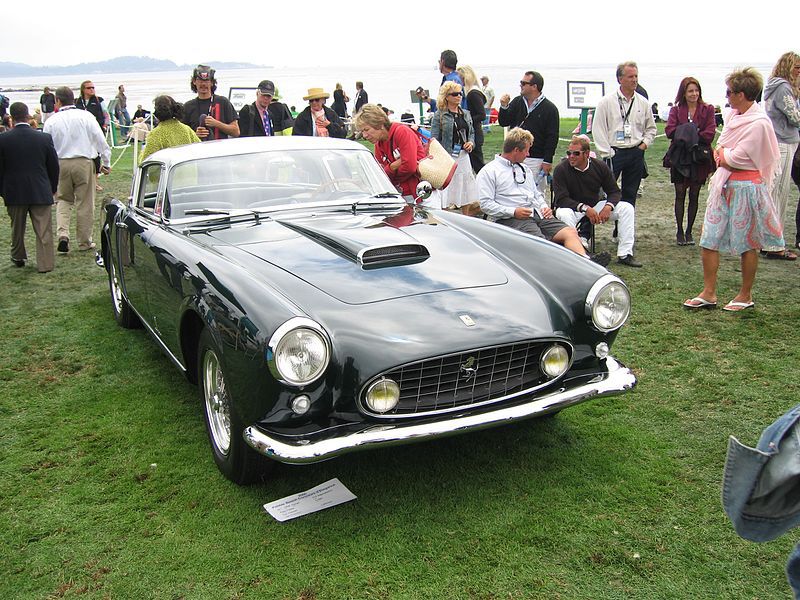
Photo by Wikimedia Commons